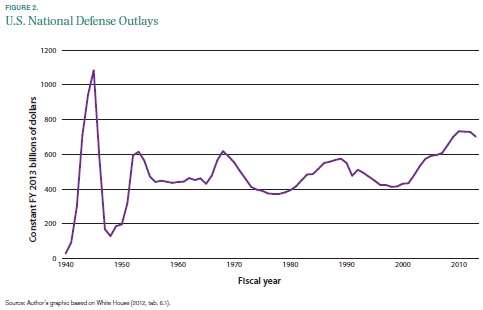Brookings Rethinks and Remakes the Federal Budget
Today, the Hamilton Project at the Brookings Institution will be kicking off its "15 Ways to Rethink the Federal Budget" project with an event on two different proposals to reduce defense spending. Brookings also released a paper on reforming temporary work visas and will release the remaining proposals at an event next Tuesday. The specific papers will be:
- Transitioning to Bundled Payments in Medicare ($100 billion)
- Reforming Federal Support for Risky Development ($40 billion)
- Restructuring Cost Sharing and Supplemental Insurance for Medicare ($125 billion)
- An Evidence-Based Path to Disability Insurance Reform ($10-20 billion)
- Eliminating Fossil Fuel Subsidies ($41 billion)
- Better Ways to Promote Saving through the Tax System ($40 billion)
- Limiting Individual Income Tax Expenditures ($1 trillion)
- Replacing the Home Mortgage Interest Deduction ($300 billion)
- Funding Transportation Infrastructure with User Fees ($312 billion)
- Creating an American Value-Added Tax ($1.6 trillion)
- The Many Benefits of a Carbon Tax ($199 billion)
- Overhauling the Temporary Work Visa System ($7-12 billion)
- Increasing the Role of the Private Sector in Housing Finance ($134 billion)
- National Defense in a Time of Change ($500 billion)
- Making Defense Affordable ($540-770 billion)
The first defense proposal by Admiral Gary Roughead and Kori Schake of the Hoover Institution includes enough specific savings to meet the total called for in the President's budget. They would redesign the force structure and related infrastructure to better meet the strategy laid out by the Pentagon last year, shifting focus away from fighting sustained ground wars and more towards providing quick response times in Asia. This approach would involve an additional 200,000 active duty troop reduction in the Army (down from its planned 490,000) -- combined with a 100,000 person increase in reservists -- and a slight reduction in the Marine Corps, while leaving the Navy and Air Force at their currently planned levels. They would also reduce civilian personnel by a greater proportion than the uniformed personnel reductions.
In terms of acquisitions, they prefer to see not only a better evaluation of our needs, but a more efficient delivery of what the Pentagon does want. This involves reorienting the process to more closely connect process requirements to cost and holding Service Chiefs more accountable for failures to meet cost or time deadlines. In terms of personnel costs, they said they would save $20 billion annually by phasing out TRICARE for Life, increasing copays for medical and pharmaceutical costs, and allowing service members to design their own benefit package.
The second defense proposal comes from MIT's Cindy Williams. The paper looks at a number of different options for reducing the Pentagon's "internal cost growth" (cost growth within the Pentagon that puts pressure on the rest of the defense budget) and ways to meet two different spending reduction strategies: reducing defense spending by 10 percent in real terms through proportional reductions in military departments and reducing it by 16 percent in real terms by 2015 while rebalancing forces towards Asia. She starts off by noting the budget situation and the fact that defense spending has often played an important role in deficit reduction, especially during drawdowns from wars.

Source: Williams (Data from OMB)
To reduce internal cost growth, Williams recommends using the Pentagon's recommended health care reductions, limiting pay raises to inflation for four years, reducing the number of personnel who serve until retirement, reducing housing allowances for off-base housing, cancelling systems whose excess costs exceed 10 percent over five years, and ramping up enforcement of acquisition procedures.
Meeting the broader goals would require those policies and additional changes in force structure. Williams looks at what the first option -- reducing departments proportionately, resulting in a 10 percent real cut -- might entail. The Army would see five additional brigades eliminated and a reduction of 60,000 additional active duty troops, the Navy's fleet would be reduced from the 295 ships they plan to have in 20 years to 250 proportionally, the Marine Corps would be reduced by another 14,000, and the Air Force would shed 7 squadrons and 39,000 airmen. The second option is intended to more closely reflect the Pentagon's strategy and is compared to the first option to see how priorities differ. The cuts are more focused on the Army, which would see 13 brigades eliminated and a reduction of 120,000 active duty troops, mostly coming from Europe. The Navy would shift its resources away from carriers and littoral combat ships to submarines. The Air Force would reduce its airmen by 62,000 and shift resources away from fighters and more towards support and long-range bombers. Intelligence budgets would be reduced by 16 percent. Overall, the second option makes deeper cuts than the first, but does so in a more targeted way.
The Hamilton Project's re-thinking of the federal budget should be very interesting, producing detailed analyses of policy proposals across the budget. We look forward to seeing the rest of the papers on Tuesday, and will report back on The Bottom Line when they come out.


